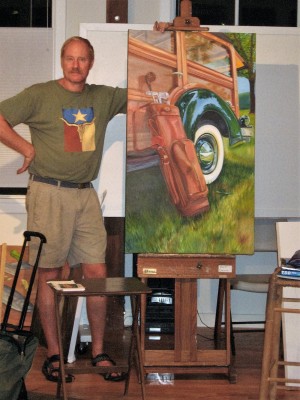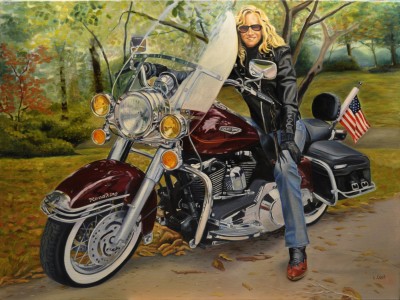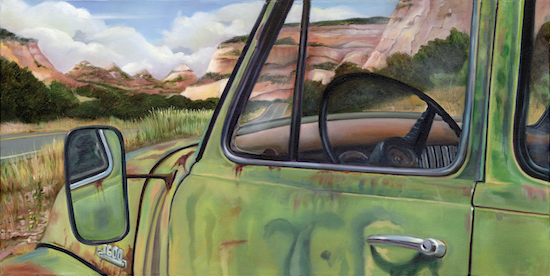Finding ways to express disparate passions is a tall order, but at 6 foot, 4 inches, Eugene (Chip) Cecil is up to the challenge. Gifted with a keen eye and agile hands, Chip has made his way as a painter, a business owner/operator, and most recently, an inventor.

Since early childhood, the 60-year-old Bethesda native has been drawn to art and automobiles. “As a kid, I liked to draw and paint,” he recalls. “And I was always taking things apart, tinkering and building.” By age 10, Cecil had become fascinated with checking out what was under the hood of cars, and during his teens, he owned mini-bikes, go-carts and small motorcycles. He bought his first car, a Renault R8, at 16, and his second, a 1965 Mustang convertible, at 17.
While Cecil admits to having been average in his academic subjects at Walt Whitman High School, he excelled in art. He proceeded to take mostly studio art classes at Georgia Southern College and Montgomery College, but did not earn a degree. Now, he regrets not getting an engineering degree because it would have made his design skills more marketable.

Cecil’s parents—his father, a mechanical engineer by training, who worked for the CIA and Naval intelligence, and his mother, who had an art background and also worked for “the agency” —discouraged their only child’s interest in cars. Ignoring their advice, he began working as an auto mechanic.
Still, Cecil maintains, “The art was always there,” despite his conviction that painting would not be a “primary income source.” Early on, he used his computer drafting skills to work for Vitro Corp., the now-defunct defense contractor, for five years. In the 1980s, he created single panel gag line cartoons; one was part of an advertisement for an Aérospatiale commuter plane that appeared in both The New York Times and The Times of London. Magna Magazine, a big and tall men’s publication, hired him for cartooning as well as modeling.
More than 20 years ago, Cecil started Autech, a mobile automotive detailing business that continues to thrive. He also collects and restores vintage cars, including a 1965 Corvair convertible and a 1972 BMW 2002; both have appeared in his paintings.

The artist’s works–large-scale, colorful, often whimsical but always realistic—adorn his home–the house where he grew up. Most of these oil paintings feature vehicles, including cars, trucks, motorcycles, and even a spaceship, as well as nude human figures.
Reflections are key to his vision. They are “neat. They offer multiple views, kind of a double take in perspective. You see one thing, and in the reflection, you see all around, too. It’s kind of Escher-esque,” he observes, referencing the Dutch graphic artist known for irregular perspectives that are not possible in reality.
Cecil typically works from photographs rather than from life, he says, so as to avoid the inevitable changes in light and reflections that occur through the day. Realism is his style of choice, though he appreciates Impressionists and abstract realists. “I’m just more technical,” he explains. “And when I try to loosen up, I end up tightening up.”
A complex street scene featuring reflections seen through windows has been on the artist’s easel, 50 percent completed and untouched for the past six months. Cecil’s focus has been elsewhere; he has designed and built a gas-powered, three-wheel motor scooter with a unique steering system.
While Cecil says he has a myriad of ideas for future paintings, his first priority is getting the invention business off the ground—refining his scooter, making it electric, perhaps applying for a patent. “Art takes different forms,” he observes. “While working on the vehicle, I learned to weld, and to cut tubing. It’s another expression of my creativity, a different canvas.”
To view Cecil’s work, go to www.automotiveartists.com/eugene-chip-cecil or www.yellowbarnstudio.com. Cecil’s work is now on view at The Framer’s Choice Gallery in the Kentlands.